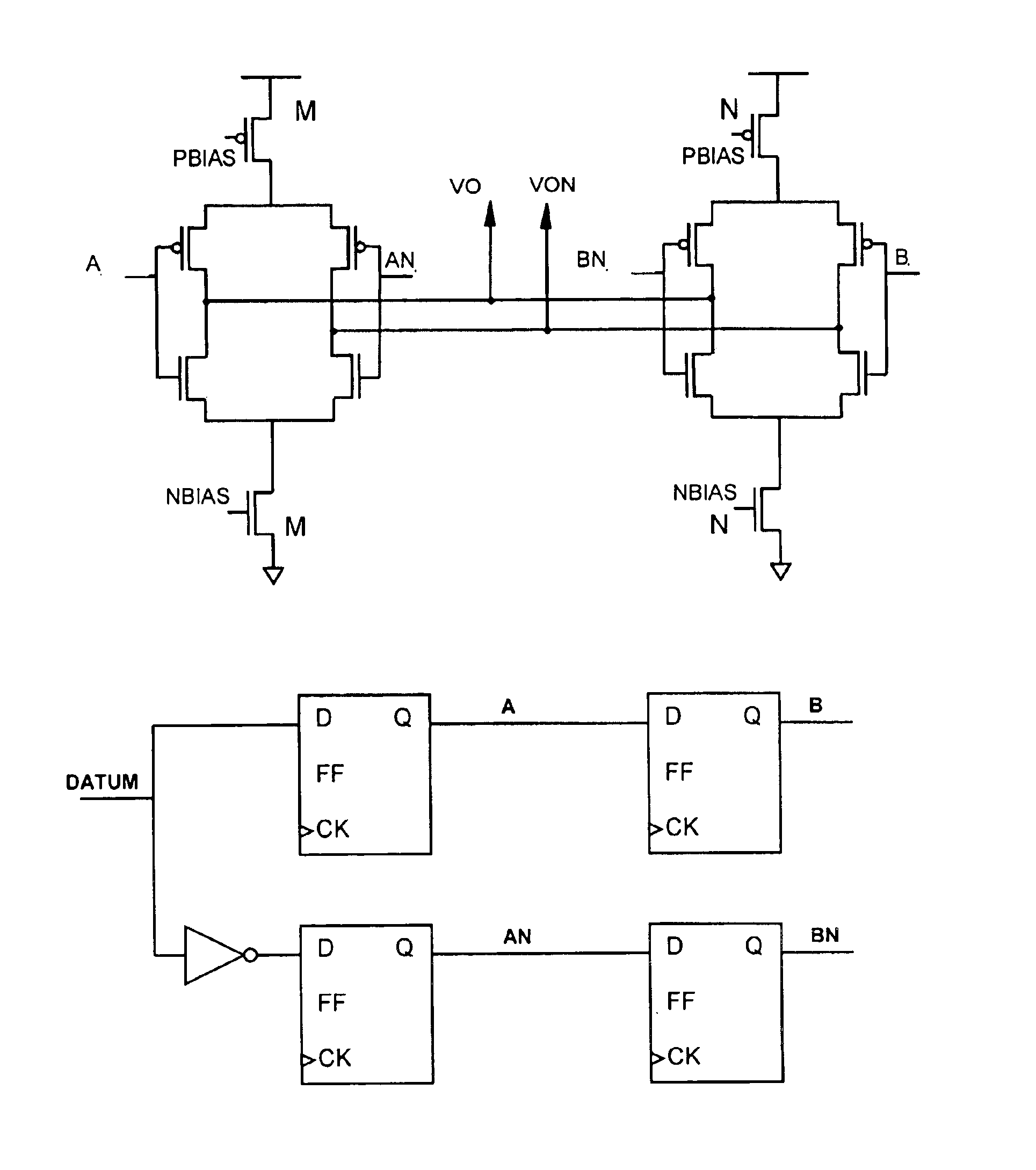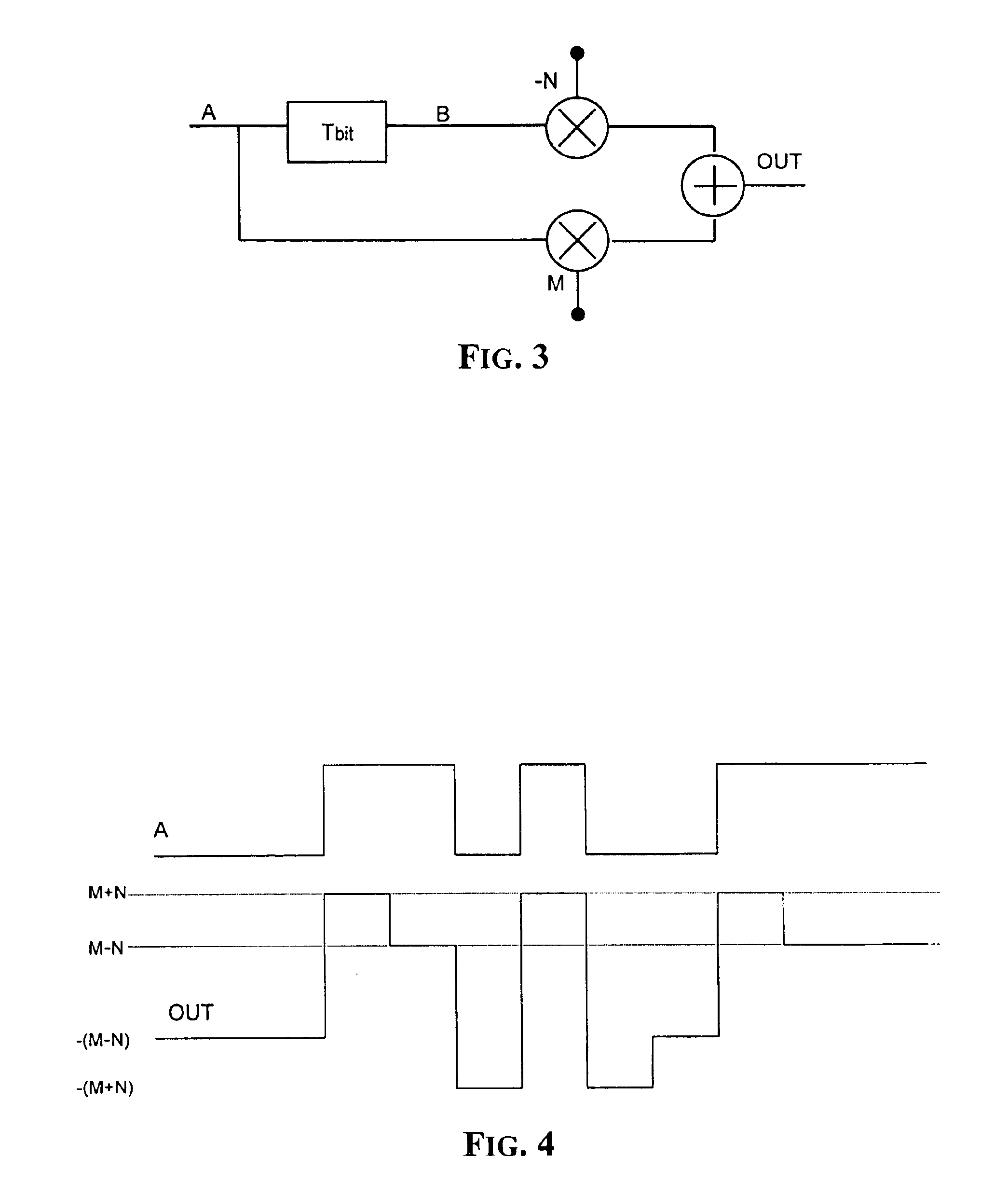Method and amplification circuit with pre-emphasis
a technology of amplification circuit and pre-emphasis, applied in the direction of amplification control details, transmission, electric pulse generator, etc., can solve the problems of difficult outputting of signals of extremely high frequency, more problems, and critical handling of off-chip electrical signals, so as to improve the performance of circuits
- Summary
- Abstract
- Description
- Claims
- Application Information
AI Technical Summary
Benefits of technology
Problems solved by technology
Method used
Image
Examples
Embodiment Construction
An advantageous feature of the present invention includes generating the amplified digital signal that is transmitted over an output line as the weighted algebraic sum of the input digital signal to be transmitted and a delayed replica thereof. Referring now to FIG. 3, a basic diagram of the amplification circuit with pre-emphasis in accordance with the present invention is shown. The label A indicates the digital signal to be transmitted, and the label OUT is the output signal that may be either a full-swing or a LVDS signal. The output signal OUT is the difference signal between an amplified replica with a certain gain M of the signal A to be transmitted, and an amplified replica with a certain gain N smaller than M, of a delayed replica B of the signal A.
The novel architecture of the present invention does not require sub-circuits to be switched in or out of the functional amplifying circuit at each transition of the signal A. The digital signal A is desirably amplified with an e...
PUM
 Login to View More
Login to View More Abstract
Description
Claims
Application Information
 Login to View More
Login to View More - R&D
- Intellectual Property
- Life Sciences
- Materials
- Tech Scout
- Unparalleled Data Quality
- Higher Quality Content
- 60% Fewer Hallucinations
Browse by: Latest US Patents, China's latest patents, Technical Efficacy Thesaurus, Application Domain, Technology Topic, Popular Technical Reports.
© 2025 PatSnap. All rights reserved.Legal|Privacy policy|Modern Slavery Act Transparency Statement|Sitemap|About US| Contact US: help@patsnap.com



